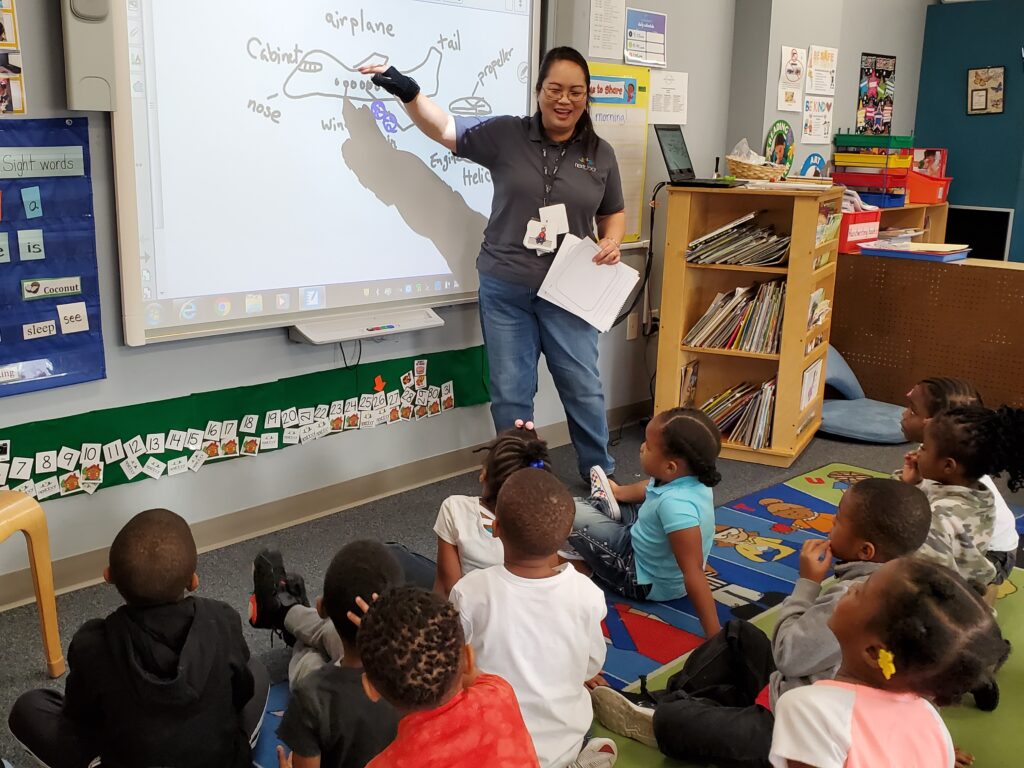Ma. Pa: A Next Door PBST teacher success
Three years ago, Next Door teacher Ms. Pa started facing some student behaviors she couldn’t figure out how to address. Her next move was to Next Door’s Positive Behavior Support Team, or PBST, and she found a support system that is helping out tremendously in her classroom.
“The support has been and is still a huge benefit for me as a teacher. I feel more empowered as a teacher, more connected to the students and less stressed in the classroom,” Ms. Pa said.
Next Door’s PBST team works with teachers to help them evaluate a variety of behavior concerns in the classroom and develop strategies to address them. Much of this partnership is one-on-one coaching but there is also larger group training for Next Door teachers.
Ms. Pa works with PBST coach Kate Campbell. She has helped her develop tactile strategies like fidget toys the children can focus on to calm down and weighted blankets to help them fall asleep at nap time.
A wiggle seat is another effective tactile tool that Ms. Pa deployed for a child who was always forcing her way up to the front during story time and blocking the other students. Ms. Pa combined that seat with a book for the girl to read while she read that same story to the rest of the class.
“It gave her sense of personal belonging — that was her seat, her book — and she calmed down and looked at her book as I read mine and the whole class was able to participate without being interrupted,” Ms. Pa said.

Ms. Pa has an extensive collection of visual aids to help regulate student behavior. These include personalized stories written by the children with Ms. Kate to help them understand why they shouldn’t do certain things like run to the door.
Ms. Pa also wears a ring of laminated cards on a lanyard depicting various actions a child needs to take, like getting in line or working together. A separate ring is given to the student to help reinforce the action they are shown. Later on, Ms. Pa displays a new set of cards with positive responses like a “thumbs up” when the child follows directions.
“When the students see those positive cards, they respond with a feeling of calmness and continue to engage positively,” she said.
Students have also responded well to a series of “If-Then” visual cues showing how one action leads to another.
Ms. Kate says Ms. Pa is a great example of a teacher who understands the need to go beyond traditional measures when it comes to her most challenging students.
“Ms. Pa has taken this concept to heart by being willing to change how she responds to the challenging students in her classroom. Her willingness to adjust her approach has definitely paid off with many of her students,” Ms. Kate said.

